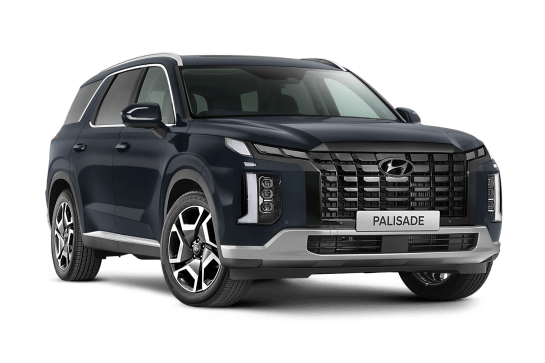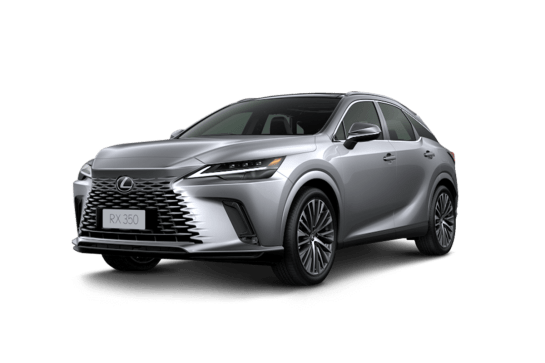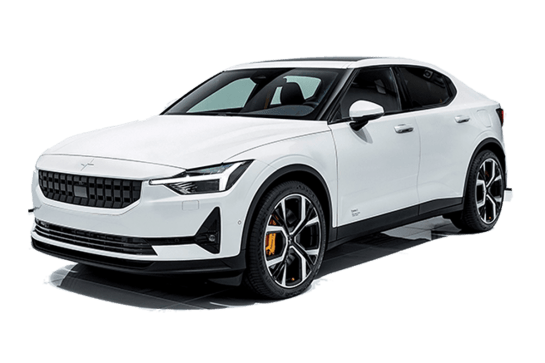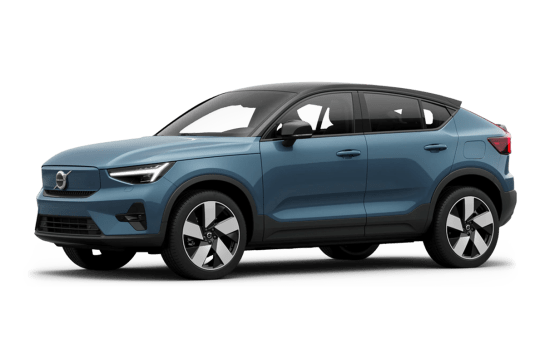
Audi Q5 VS Hyundai Palisade
Audi Q5
Likes
- Sprightly performance
- Still a dynamic winner
- Spacious, well-crafted interior
Dislikes
- Loses cargo space over petrol models
- Cabin starting to date
- Driving range can’t match Lexus
Hyundai Palisade
Likes
- Roomy
- Comfortable
- Family friendly
Dislikes
- Price-tag
- Laggy acceleration
- Some annoying driver-assist tech
Summary
Audi Q5
Audi has had a mixed history with plug-in hybrids (PHEV) in Australia. Under its ‘e-tron’ banner it has launched PHEV versions of the previous A3 hatch, and the Q7 SUV, with limited success.
But the German marque believes the time is right to add plug-in power to one of its most popular models - the Q5 mid-size SUV.
With decent driving range and a packed standard features list, Audi is not messing around. But how does it stack up value wise against the already popular BMW X3 and Volvo XC60 PHEVs?
| Safety rating | — |
|---|---|
| Engine Type | — |
| Fuel Type | Electric Hybrid |
| Fuel Efficiency | —L/100km |
| Seating | 5 seats |
Hyundai Palisade
The Calligraphy is in the upper ranks of the Hyundai Palisade line-up.
It’s a big classy-looking SUV inside and out, it’s packed full of features, it has eight seats, and it’s even all-wheel drive, but with a price tag that’s more than $80,000. Is it worth your consideration?
Read on.
Read more about
- Problem? What problem? Why Hyundai isn't worried about its sales despite getting beaten by Kia and Ford in 2023
- Can Hyundai take down Toyota in the off-road war? It will be LandCruiser Prado versus Santa Fe XRT in the battle of the bush-bashers in 2024
- 2024 Hyundai Staria Hybrid confirmed: Domestic market pre-orders open for new petrol-electric hybrid version of Kia Carnival rival. But will it come to Australia?
| Safety rating | |
|---|---|
| Engine Type | 2.2L turbo |
| Fuel Type | Diesel |
| Fuel Efficiency | 7.3L/100km |
| Seating | 8 seats |
Verdict
Audi Q57.9/10
It might be a late return to the PHEV game for Audi, but it’s an impressive one. Everything great about the Q5 remains - dynamically engaging, responsive powertrain - but you get the added benefit of electric power.
This could be the car to prove that plug-in hybrid medium SUVs don’t have to be bland family transport. If the Q5 is anything to go by, going green can be downright fun!
Note: CarsGuide attended this event as a guest of the manufacturer, with travel, accommodation and meals provided.
Hyundai Palisade7.4/10
The Palisade Calligraphy is a nice SUV to drive on road. It’s composed and refined, and as an eight-seater, it makes a sensible daily driver, especially for those of us with more than a couple of children.
My teenagers loved this Palisade because there were charge points for everyone – namely them – and that second row, according to them, is very comfortable.
It has a few niggles, but, while it’s not perfect, the Palisade Calligraphy does so many things so well that you are willing to forgive it its few quirks and AWD gives it a handy advantage over any of its 2WD rivals.
Design
Audi Q5
The second-generation Q5 has been around for six years, and it was very much an evolution of the original, but it still looks attractive in the metal. You couldn’t call it edgy, but it is handsome.
Both PHEV body styles get the S line exterior package as standard, which adds a unique honeycomb grille, S line bumpers front and rear, Audi Sport wheels and it borrows the rear spoiler from the SQ5.
While many will favour the swoopy Sportback body style, I think the Q5 is at its most arresting in SUV body style, bathed in the gorgeous 'District Green Metallic' paint. Stunning.
Inside, only the Sportback gains the S line interior, which includes a leather three-spoke steering wheel with multifunction, shift paddles and hands-on detection, Nappa leather upholstery with contrast stitching, and aluminium inlays. The SUV seats are leather-appointed.
It’s fair to say Audi’s interiors have modernised since the launch of this Q5 in 2017, but it’s still hard to fault. The multimedia screen jutting out the top of the dash is a little old school these days, but the materials and quality are top notch.
Hyundai Palisade
This is a nice looking SUV in a generic, non-offensive way.
The Calligraphy is in the top ranks of the Palisade range, so, in terms of design you'd expect it to be a bit easy on the eye and it is, especially the exterior, from the big grille all the way back.
Our test vehicle’s colour looks a lot like black to me. Hyundai calls it 'Robust Emerald' and I started to not strongly dislike it after a few days.
The interior has a real premium look and feel to it with Nappa leather accents and expanses of soft-touch surfaces adding to that prevailing overall impression.
This is a cleanly designed space – it's really quite easy on the eyes – and it's comfortable to be in. Bonus: the build quality is great, it all feels so well put together.
This Palisade is also a prime example of a car maker effectively blending high-tech displays and controls into a cabin in a low-key way – nothing really seems out of place here and everything is easy to locate and operate.
Practicality
Audi Q5
As - predominantly - a family hauler, the Q5 has always done well in the practicality stakes. And adding a plug-in hybrid powertrain hasn’t changed that. Although you do lose some boot space compared with the petrol models - but more on that in a bit.
Up front, the Q5 has plenty of nooks and storage slots in the console, including a longer shallow slot to hold phones. The central bin is deep enough and the door bins can swallow big bottles and more. Housing the phone charger on the top of another storage spot in the console works as it can be hidden by the larger storage lid for security.
As the Q5 is older than some of Audi’s fresher models, there are physical buttons for things like air conditioning, seat heaters, and controls for drive modes and other vehicle functions.
It might not look as schmick as having a screen to house everything, but from a practicality and safety perspective, it’s welcome.
This approach also extends to the multimedia system which is fairly simple to navigate with a logical menu. Audi’s system gets a tick, as does the digital cockpit - something the brand pioneered.
While the leather appointed seats in the SUV are nice, the quilted Nappa leather seats in the Sportback are much more luxurious. And the ‘Rotor Grey’ colour scheme is simply beautiful. They offer more than enough support in the front row and they are comfy without being super plush.
There’s ample leg and headroom in the front row.
That is the same for the second row. So much headroom even with a panoramic sunroof. And behind my 183cm (six foot) driving position, there was room to spare in front of my knees. It’s such a good size.
Also, the rear seats have some bucketing so passengers will feel a little spoiled. There’s also knee-level air vents, map pockets, two USBs and a 12-volt port, a fold-down armrest with cupholders and ISOFIX points on the outboard seats.
The rear row folds 60/40 and there’s decent room in the boot, which has a power operated tailgate.
Given some of the PHEV hardware sits directly under the boot floor, it’s little surprise that the SUV version (465 litres) loses 55L of space compared with the petrol-powered 45 TFSI.
Similarly, the Sportback (455L) drops by 45L. Also, despite the swoopy roofline, the Sportback only loses 10L of cargo space compared with the more practical looking SUV.
Those PHEV bits also mean there is no spare wheel - only a tyre repair kit.
Hyundai Palisade
Once you've spent any time in the Palisade Calligraphy cabin, you get to realise just how comfortable it is.
The driver and front-passenger seats are very comfortable and very supportive, and these are both power adjustable. The driver’s seat is 12-way power-adjustable so you can precisely dial in your position.
There are so many handy features to the interior that if you can find something that's missing, I want to hear about it.
There are plenty of storage spaces and cupholders* and lots of charge points, including a USBs up the front and two USB-Cs for each row’s passengers.
* Hyundai reckons there are 17 cupholders throughout the Palisade interior but I didn’t count them so we’re taking the company's word for it.
The second row is quite spacious and on the right side of comfortable and the passengers have access to sufficient controls including climate control.
The outboard seats are heated and there are controls for the fan on the back of the centre console. There are USB-C points on the inside edges of the front seats for the second-row passengers, a couple of cupholders either side as well as sun shades on each second-row window.
That’s helpful if you're trying to get your little ones to sleep, or at least prevent the sun from blasting them in the eyes.
In terms of child restraint points in the second row, you have three top tether points and two ISOFIX anchors and in the third row you have two top tethers and one ISOFIX location.
The third row is the domain of children, or two adults if you don't like them. There's not a lot of room. I racked the second row forward just a bit to give me some much-needed knee room.
There are a couple of cupholders either side in the third row and passengers there do have access to air vents. This is sufficiently comfortable for children, but it's a no-go zone for adults.
With all three rows in use, there is a claimed 311 litres of cargo space in the boot area, which doesn’t mean a lot until you can see what fits in there, for better or worse.
Now, normally in a Family review, you might expect to see groceries and maybe a pram in the rear cargo area as an illustrative measure of what you can or cannot fit in there. Well, that’s not my style.
This is an AWD vehicle, and I drive on dirt roads as part of any AWD test, so I wanted some items from my vehicle-recovery kit onboard, including a set of four MaxTrax (vehicle-recovery boards, if you don’t know already), an air compressor (to re-inflate a punctured or intentionally deflated tyre), a first-aid kit, and a tyre-puncture repair kit.
All of these things fit easily into the rear cargo area with the third row up and theoretically in use.
That listed cargo space increases to 704 litres with the third row stowed away.
Then, with the second and third rows down you’re at 2447 litres.
Kerb weight is 2070kg and GVM is 2755kg, so you have a little bit of wiggle room in terms of how much you can pack onboard. A full-size spare sits under the body at the rear.
Price and features
Audi Q5
Dipping its toe back in the plug-in hybrid market, Audi is keen to appeal to buyers looking to reduce their carbon footprint, but also to driving enthusiasts requiring a bit of zing with their environmental credentials.
That’s where the Q5 55 TFSI e quattro comes in. Audi Australia had the option of introducing a less performance focused Q5 PHEV grade, but opted instead for the higher output model.
Audi sees this as the SQ5 you buy when you want to save the planet. And the 0-100km/h sprint time of 5.3 seconds suggests it’s pretty close.
Pricing for the 55 TFSI e quattro starts at $102,900, before on-road costs, for the SUV body style.
Opting for the Sportback carries a $7300 premium, making the price $110,200. But you get some more gear in the Sportback over the SUV, including the S-line interior package, and Matrix LED headlights with dynamic front and rear indicators.
Other equipment standard on both grades includes a panoramic sunroof, hands-free power tailgate, ambient lighting (with 30 colours), keyless entry and start, front leather-appointed seats with heating and power adjustment, three-zone climate control, a 10.1-inch multimedia touchscreen with wireless Apple CarPlay and Android Auto, digital radio, 10-speaker audio, auto-dimming interior mirror and 20-inch Audi Sport alloy wheels.
You can opt for different 20-inch wheels or 21-inch hoops as well.
The 'Technik' option pack costs $4900 for the SUV and $4700 for the Sportback and adds a head-up display, a more premium Bang & Olufsen audio system, and high-tech head or tail-lights, depending on the body style.
All in all it’s a healthy standard features list. I’ve said it before recently, but it’s worth repeating - it’s good to see premium brands including more standard features in their models, rather than making everything an option.
That said, maybe heated rear seats (as well as the standard front seats) might have been a nice addition.
So, how does the Q5 compare with its PHEV counterparts? Its most obvious rival is the BMW X3 xDrive30e which is more expensive at $111,800.
Then there’s the Range Rover Evoque R Dynamic HSE ($104,310) and Volvo XC60 Recharge ($101,990), which line up closely with the Audi, while the Lexus NX450h+ undercuts them all ($91,423).
Hyundai Palisade
The Calligraphy is available as a 3.8-litre petrol front-wheel drive with an eight-speed automatic transmission and eight seats, or with the 2.2-litre turbo-diesel engine, eight-speed auto and AWD, as in our test vehicle, priced from $82,175 (excluding on-road costs).
Standard features include a 10-inch head-up display, heated steering wheel, Nappa leather-appointed seats, 12-way power-adjustable driver’s seat (with preferred position memory), ventilated first- and second-row seats, heated second-row seats, dual sunroof with tilt function, remote park assist (forward and reverse), a digital rear-view mirror and 20-inch alloy wheels with a full size spare wheel.
Under the bonnet
Audi Q5
The Q5 pairs a 2.0-litre four-cylinder turbo-petrol engine - found in many VW Group products - with a plug-in hybrid set-up that includes a lithium-ion battery pack and an electric motor.
The total system output is 270kW of power and 500Nm of torque, which is impressive. In fact, it has more power - but a little less torque - than the SQ5 performance flagship.
It drives all four wheels thanks to Audi’s quattro all-wheel drive system, and does that via a seven-speed dual-clutch automatic.
Hyundai Palisade
Our test vehicle has a 2.2-litre four-cylinder, common-rail, turbo-diesel engine sending 147kW (at 3800rpm) and 440Nm (at 1750-2750rpm) to all four wheel via an eight-speed automatic transmission.
This Palisade has an AWD system called 'HTrac' (Hyundai Traction) and it operates on a similar principle to most other AWD systems in city-going SUVs, and that is it directs power to the appropriate wheels to optimise traction.
This vehicle also has multiple drive modes – 'Comfort', 'Sport', 'Eco' and 'Smart' – for on road and 'Sand', 'Mud' and 'Snow' for when you go off-road.
These off-road drive modes are absolutely no substitute for 4WD, but they are fine for when conditions get slippery, for example, if there’s a little bit of rain on the bitumen or the dirt track becomes slightly muddy.
Efficiency
Audi Q5
The PHEV’s battery capacity is 17.9kWh and that ensures the Q5 has an electric driving range of up to 55 kilometres on the WLTP protocol.
Audi says the average daily commute of an Australian is 35km, so technically many people could get to work and back using electric power only.
It might not sound like a huge amount, but it’s more than the 41km offered by the BMW X3, although it doesn’t come near the Lexus NX’s 87km claim.
Energy consumption is rated at 23.9kWh/100km, and the official fuel consumption figure for the Q5 is 2.0 litres per 100km - bettering the X3’s 3.2L/100km figure but not as frugal as the Lexus (1.3L).
It has a 54-litre fuel tank and emits 45 grams per kilometre of CO2.
The Q5 PHEV has a Type 2 plug and comes with a charger to add more juice at home.
It has an AC charging capacity of 7.2kW and it will take two and a half hours to fully charge using a home wallbox charger. You can also plug it into a regular wall socket at home and it’ll be charged up in about eight hours, or overnight. It's not capable of DC charging.
Hyundai Palisade
Fuel consumption is listed as 7.3L/100km on a combined cycle. On this test, I recorded 9.0L/100km.
The Palisade has a 71-litre fuel tank. So, going by that on-test figure, you could expect a driving range of almost 800km from a full tank.
But remember you’ll be carrying more people and gear onboard so fuel economy will be affected accordingly.
Driving
Audi Q5
The Q5 has always been the driver’s pick among its peers - specifically the BMW X3 and Mercedes-Benz GLC. You could argue a Porsche Macan is more engaging and you’d probably be right. But of those immediate German rivals, the Q5 takes the cake.
Adding a PHEV powertrain and the circa-300kg of extra weight that brings should impact dynamics - but somehow, it doesn’t.
First of all, the Q5 PHEV can do the 0-100km/h dash in just 5.3 seconds which is hot hatch territory.
But the really impressive thing about this Q5 is how well it handles, despite that extra weight. The battery pack is housed under the boot floor, and Audi engineers have done a bang up job in ensuring it retains that dynamic prowess it's known for.
We drove on some delightfully twisty roads in the Gold Coast hinterland for this launch event, and the Q5 didn’t miss a beat.
It maintained composure when pushed into tight corners, and had plenty of grip. And the electric urge coming out of those corners - providing you have battery charge left - only helps the experience.
Typically sharp Audi steering is indeed present and welcome.
Riding on 20-inch Audi Sport alloy wheels, and with a sporty bent, you’d think the ride quality would be impacted. But that was another pleasant surprise.
The Q5 soaks up corrugations with the standard suspension set-up, and the tyres have a decent sidewall. So no unpleasant sharp bumps detected.
The cabin is reasonably well insulated from most outside intrusion as well.
Hyundai Palisade
This is an easy driving wagon. It's nice and comfortable, it's refined, it's always composed and it's always controlled and it's just an all around nice drive from the engine and the auto, which are a really good pairing.
As mentioned earlier, kerb weight is listed as 2070kg and this Palisade has an 11.8m turning circle, so it’s not an insubstantial vehicle to steer around.
It’s not very dynamic, not very lively, but it has a nice consistent feel to it all – and being composed and consistent is important with something that's intended as a people mover, as a family vehicle because that's what you want.
Ride and handling are well sorted out and, though there’s a touch of firmness to the suspension, ride quality is smooth in general terms.
There are the paddle shifters on the steering wheel if you want a little bit more input into shifting up and down in the automatic transmission, but it’s rather clever so you can just let it do its job as it does that nicely.
There are four on-road drive modes – Comfort, Eco, Sport and Smart. Smart tweaks vehicle characteristics such as engine output, transmission settings and braking to suit your driving style, and depending on which of the other modes you select, it will adjust those characteristics and/or more to suit the terrain or the conditions you’re driving in.
And while this Palisade is impressive in terms of performance and driving characteristics, there are a few niggles.
Acceleration is a bit laggy and it takes a heavy right boot to get the Palisade moving at pace.
Some of the driver-assist tech is often abrupt and intrusive. The traffic-sign recognition (or speed limit assist) is clunky. It detects and reacts to signs that don't apply at that time of day, say school zone signs, or it picks up on signs that don't apply to that section of road.
So, it's forever chopping and changing between speeds you should be at and speeds you shouldn't. You can adjust those settings or switch them off in the Hyundai app via the touchscreen multimedia system, but those settings return as defaults when you next start the vehicle.
Now for some dirty talk. The Palisade Calligraphy is an all-wheel drive SUV wagon that does sufficiently well on terrain that would be moderately challenging for a 2WD vehicle.
Our light-duty test track is sandy and there are some very shallow wheel ruts – nothing serious – and this Palisade handled all of the minor challenges well.
Ride quality over some of the lumpier sections was good. It's a bit on the firm side as you'd expect because this is a SUV designed for the suburbs not the Simpson, but it is perfectly reasonable on a very easy dirt track in dry conditions.
And that’s the good thing about an AWD over a 2WD vehicle; you have that extra degree of traction, especially if you get into a traction-compromised situation such as a slippery wet bitumen road or a slightly muddy, but otherwise well-maintained, gravel route.
This Palisade has three terrain driving modes – Sand, Mud, and Snow – which each adjust throttle response, engine output, and the automatic transmission, among other things, to ensure you keep moving safely with controlled momentum.
If you’re planning to use your daily driver / family mover as a towing platform it’s handy to note that the Pailsade’s towing capacity is 750kg (unbraked) and 2200kg (braked).
Safety
Audi Q5
The Q5 plug-in counts an impressive level of safety gear, including eight airbags in total, although that does not include a front centre airbag.
It comes with the usual suite of driver aids, including Audi’s ‘pre-sense city’ system that activates emergency braking at speeds up to 85km/h, ‘pre-sense front’ emergency braking up to the Q5’s maximum speed, as well as attention assist, an active bonnet, a tyre pressure monitor, and hill descent control.
It also features adaptive cruise control, lane keep assist, blind spot monitor, safe exit assist, cross traffic alert and a 360-degree camera with an excellent display.
While the rest of the Q5 range is covered by a five-star ANCAP safety rating dating back to 2017, the Q5 plug-in hybrid remains unrated for now.
Hyundai Palisade
The Palisade has the maximum five-star ANCAP safety rating, from testing in 2022.
As standard the Calligraphy has seven airbags, as well as a stack of driver-assist technology including AEB, adaptive cruise control, a 360-degree camera, lane keeping assist and more.
Ownership
Audi Q5
The Q5 comes with Audi’s five-year/unlimited kilometre warranty. This was an increase on its previous term that Audi announced at the start of 2022. The PHEV is also covered by an eight-year/160,00km battery warranty.
Service intervals are every 12 months or 15,000km, whichever comes first, and Audi offers a capped-price service plan for five years that costs about $3500 all up. That’s a little pricer than BMW and Volvo’s plan.
Hyundai Palisade
Every Palisade is covered by a five-year/unlimited kilometre warranty and roadside assistance is complimentary for the first 12 months, renewed annually (for the life of the vehicle) if you have your Palisade serviced at an authorised Hyundai dealer.
Service intervals are set at every 12 months or 15,000km, whichever occurs soonest, and pre-paid plans are available over three, four or five years.
The latter costs $2445, which equates to $489 per service. Not cheap but not outrageous.






































